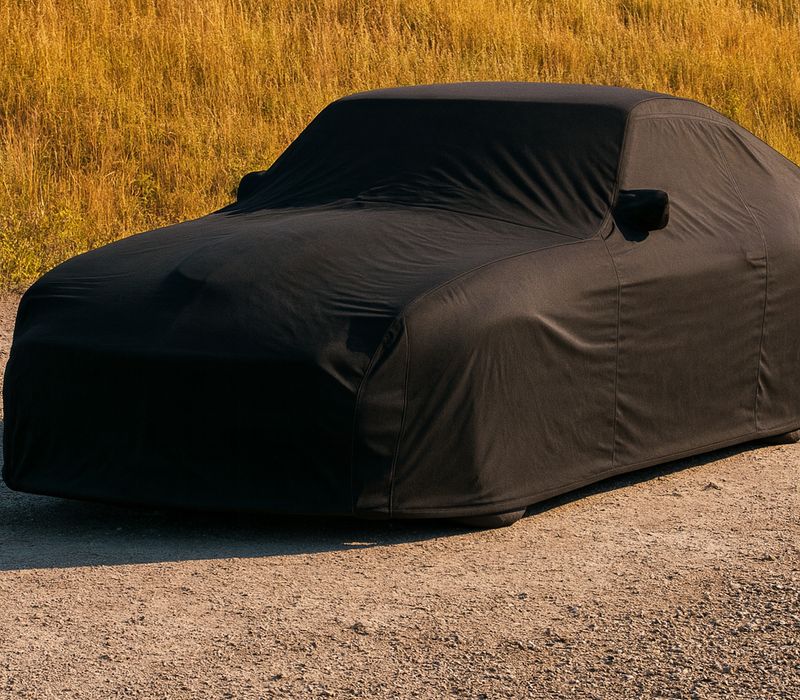
Datsun car cover is not just a simple tarp. With intense sunlight and increasingly strong UV in many U.S. states, the right cover works like a passive defense system that guards your Datsun around the clock. If you have ever opened a door at noon in Arizona, Southern California, or Texas, you know the feeling: a stifling cabin, a steering wheel that burns your hands, leather seats that feel parched, and a faint plastic smell. That discomfort lasts only minutes, but the hidden damage adds up day after day. This article walks you from the very real pain of sun exposure, to how UV breaks materials down, to the specific sensitivities of both classic and modern Datsun, and finishes with a practical solution: choosing and using a UV-protective, breathable, quick-dry, soft-lined car cover to keep paint and interior looking new when parked outside or stored for long periods.
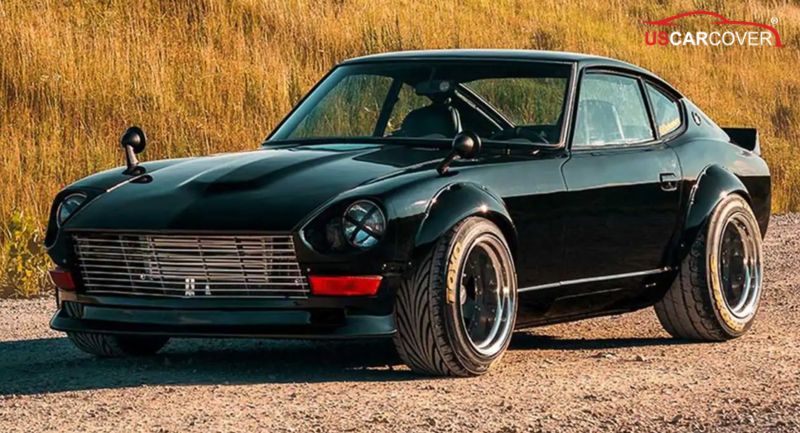
Related Articles: Daimler car cover: Long-term storage, quick drying, no musty odor, no veneer stains
Sun exposure: why the car heats up and fades so fast
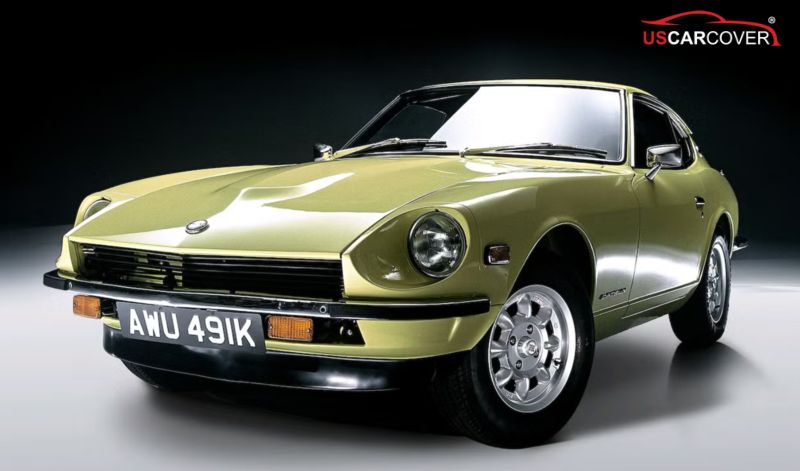
A truthful opening always connects to lived experience: after only 20 to 40 minutes parked in direct sun, cabin temperatures soar. The windshield and side glass act like oven windows, capturing radiation and holding heat inside. You climb in and feel a burning steering wheel, a dash that radiates heat like a skillet, and leather or cloth that is hard to sit on. That is an everyday scene in California’s interior, the Phoenix valley, and the Sun Belt. What matters more is the long-term consequence: heat and UV do not just bother you for a few minutes, they age the vehicle every day.
With repeated sun exposure, exterior paint gradually loses depth, the clear coat starts to show blotchy spots, a dull haze, and in later stages may peel in small patches. Inside, leather, vinyl, and soft plastics lose natural oils, contract, dry out, and then crack at areas that take direct sun like dash edges and the tops of seatbacks. Add road dust and fine grit floating in the air, which stick to hot surfaces like a magnet. Every quick dry wipe on hot paint risks micro-scratches. All of that adds up to real restoration costs. The simplest, most effective answer is blocking sunlight at the surface with a proper Datsun cover.
Related Articles: Citroen Car Cover: Cooling the car, protecting the interior, keeping the cabin cooler when parked outdoors
What is special about Datsun that needs extra protection
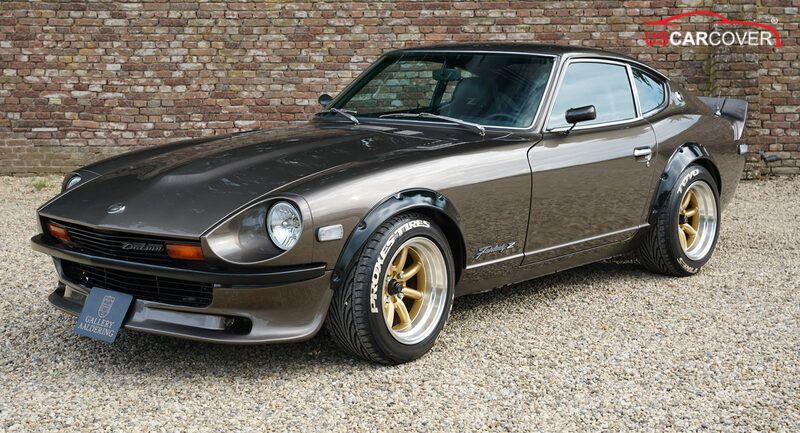
When you hear Datsun, you might think of the 240Z, 260Z, 280Z, 510, or Roadster. These icons are known for tidy fastback bodies, bright chrome, large glass areas, classic proportions, and cabins with leather, vinyl, and cloth. Those period-correct materials and proportions create a unique character, but they are also vulnerable in strong sun.
Metallic paint and clear coats on many classic cars are often thinner than modern standards, which makes them more UV sensitive. Chrome and bright trim quickly turn cloudy or speckled when sun combines with nighttime dew or coastal salt air. Dash panels and plastics that have already aged over the decades can crack after just a few harsh summers. Leather or cloth that was beautifully restored will slide out of tone fast if left in direct sun. For modern Datsun models that carry classic DNA, there is an extra layer of risk from electronics, sensors, soft-touch plastics, and interior UV coatings that prefer stable temperature. Bottom line: both classic and modern Datsun have many details that demand proactive shielding if parked outdoors or stored for long periods.
Related Articles: Chrysler car cover - Storm and wind protection: add a physical lock, stabilize form, stop ballooning that scuffs paint
How harsh sun and UV damage paint and interior
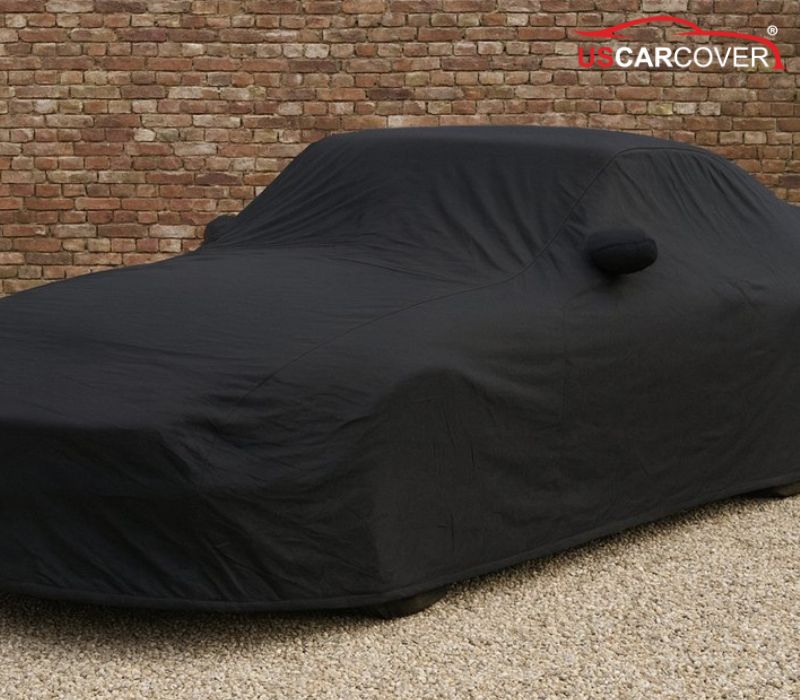
To pick an effective UV car cover, it helps to understand the damage mechanism. UV radiation, especially UVA and UVB, breaks polymer chains in paint and plastics, which leads to color fade and surface aging. At first, the car simply loses a little depth and gloss; later, the clear coat shows uneven tones, a slight roughness, and in severe cases may flake. High heat makes materials expand, then contract when they cool. That repeated thermal cycling creates hairline cracks in paint, vinyl cracking, leather drying, and foam shrinkage underneath.
Sunlight through glass also creates a greenhouse effect. Cabin temperatures rise quickly, aging adhesives, foam tape, and soft coatings on buttons and handles. Over time, surfaces that used to be smooth and rich turn slightly sticky or start to craze. As for fine dust and grit, once they sit on a hot panel, even one quick dry wipe can carve light swirl marks. The conclusion is clear: stop radiation at the outside skin with a Datsun car cover to reduce heat and UV in the simplest, most effective way.
Related Articles: Chevrolet car cover - Reduce “curious touching,” reflective edging for visibility, conceal the interior at night
The U.S. sun map: where paint and interior take the hardest hit
A geographic snapshot clarifies the real risks:
- Desert Southwest such as Arizona, Nevada, and New Mexico brings intense, dry sun, sometimes at elevation where UV is even stronger. Parking outside is the fastest route to fade.
- California’s interior, the Central Valley, and Southern California have long summers, scarce shade in open lots, and habits of multi-hour outdoor parking.
- Texas and Florida stack heat with humidity. Heat plus moisture together push cabin mugginess, speed odor buildup, and make staining more likely.
- Higher-altitude areas like Colorado and Utah are cooler, but UV is stronger because the air is thinner. Pull-offs for scenic views still hammer interiors with UV.
Different regions, same result: parking outdoors without shielding will wear paint and interior faster than you expect.
Related Articles: Checker car cover: mold resistant, odor control, quick-dry material that does not trap moisture
Why a Datsun car cover is the root solution for sun and UV
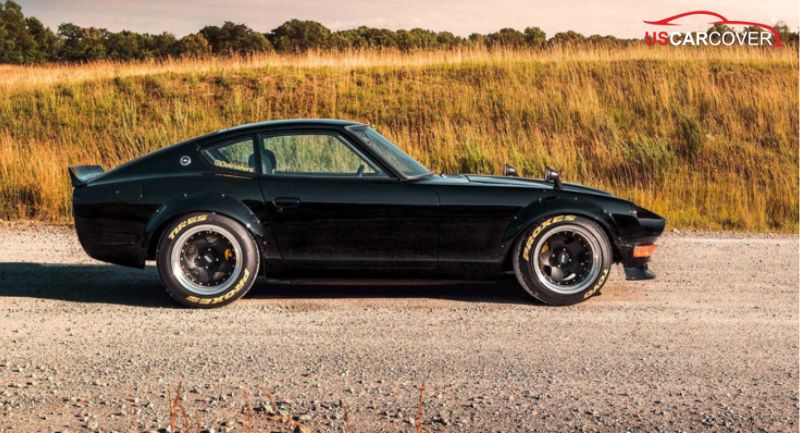
If coatings, waxes, and sunshades are supportive layers, a Datsun car cover is the first wall of defense. A correct cover reflects and scatters much of the sun’s energy, reducing heat transfer into the body and glass. The cabin runs cooler at the start, without the heat spike you would otherwise fight down. At the same time, the cover blocks UV from hitting paint and interior directly, preserving tone and limiting fade and blotching. By reducing daily dust buildup, you avoid wiping hot panels and thereby cut down on swirl marks.
Another big advantage is a portable patch of shade. In lots without roofs, you still carry a “roof” with you. Compared with a windshield sunshade alone, a car cover shields the entire shell, including side and rear glass, for a higher overall effect. For classic Datsun with many UV-sensitive details, the right cover extends the interval between interior restoration or paint correction.
Related Articles: Cadillac car cover: protect against dust and sand, tree sap, and animals, keep scratches away
How to choose a sun-protection cover for Datsun: detailed criteria and real examples

To stay oriented among many options, break it down into five core criteria with examples:
Real UV resistance: The outer face should be UV-stabilized, ideally in a lighter tone like silver gray or light titanium to reflect heat. In extreme sun, a high-reflectivity face helps panels feel noticeably cooler to the touch. Example: a red 240Z parked in Phoenix holds tone far better after one season if it lives under a proper heat-reflective cover rather than sitting bare.
Breathable and quick-drying: A cover must allow moisture vapor to escape. That prevents clammy conditions under the fabric when there is overnight dew or sweat on your hands after you pull the cover on. In Houston, a breathable cover keeps interiors from taking on that stuffy, humid smell after weeks in a damp garage.
Soft, light-colored inner liner with low dust pickup: A fine, anti-scratch liner reduces friction when covering and uncovering. A light color helps you monitor cleanliness and avoids dye transfer in hot, humid conditions. A dark-dyed liner is more likely to print color if you cover when the shell is still a bit warm after a short drive.
Vehicle-specific fit (custom-fit): Fastbacks, sedans, and roadsters have very different shapes. A fitted cover resists ballooning in the breeze and avoids rubbing at edges like the hood lip, chrome, and fastback tail. On the coast, wind and salt spray make form stability even more important so the cover does not slap sharp edges.
Smart tie-downs and ventilation: A gentle elastic hem and soft, multi-point straps distribute load, limiting tearing. Vents with rain hoods let hot air out without inviting rain in. For long outdoor stints, a coated underbody cable raises passive security.
Related Articles: Buick car cover: Prevent snow and ice buildup and minimize small hail damage
Location-based guidance: pick a Datsun car cover for where you park
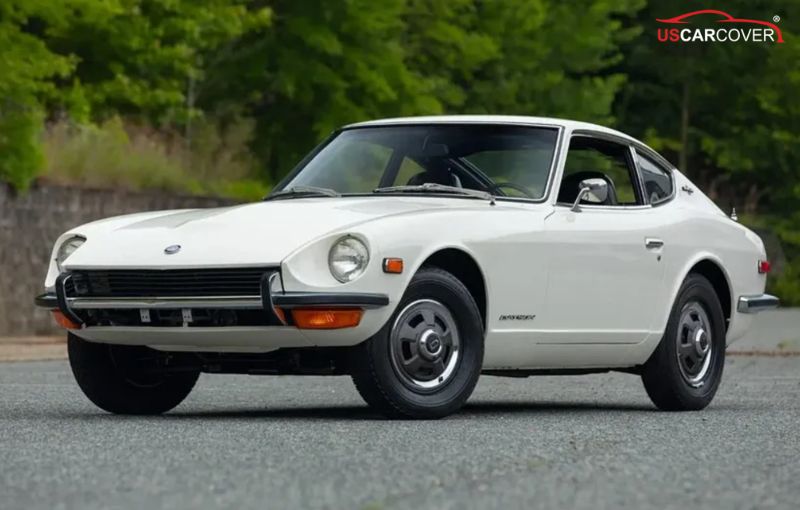
Context-based tips make decisions faster:
Arizona, Nevada, Southern California: prioritize strong heat reflection, high UV resistance, and breathable fabric. A super-soft liner makes covering and uncovering on warm panels gentler.
Texas, Florida: hot plus humid. You need fast moisture release, UV defense, and a snug fit so passing showers do not plaster the cover to the paint.
Coastal California, Gulf Coast: salt haze and marine dew. Look for quick-drying fabric that shakes off residue easily. A thin wax film on chrome before long storage helps.
City street parking: keep it lightweight for solo use, discrete tie-downs, and subtle reflective piping so you can spot your car at night without broadcasting attention.
Related Articles: Bugatti car cover: Protection for Event Days and When Transporting by Trailer
Long-term storage: how to use a Datsun car cover to keep paint and interior looking new
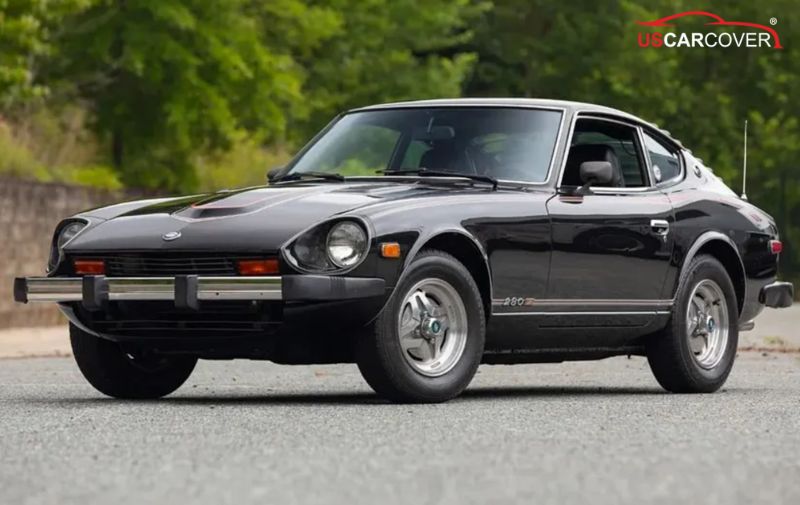
For seasonal storage or multi-week breaks, process matters as much as the cover itself. Start with clean and dry. Wash, dry every edge, and let the car cool completely before covering. When covering, set the nose edge at the emblem, pull along the roof spine, seat the mirror pockets, and relax the hem evenly at all four corners. Use soft, wide tie-downs to distribute load rather than cranking one side tight. If parked outdoors, run a coated cable under the car to prevent wind lift. In damp garages, crack a window slightly if secure, or place moisture absorbers in the cabin. Every one to two weeks, uncover and let the car breathe, spot-check chrome edges, window trim, and the dash. If the cover gets soaked, hang it to dry fully before folding away.
When the cover is breathable, quick-drying, and soft-lined, and you pair it with the right routine, you cut the UV and heat aging cycle for paint and interior at the root. After one or two sunny seasons, the result shows in paint gloss, interior tone, and how it feels to open the door at midday.
The 3-minute pre-use tests before letting the cover touch the car
A few quick checks help you avoid poor covers:
- Breathability test: press a panel of fabric to your mouth, breathe out once. If the surface dries quickly, it is moving moisture well.
- Liner dye test: rub a slightly damp white cloth on the liner for 10 to 15 seconds. If the cloth stays white, you are safe.
- Light reflection test: shine a light on the outer face; an even, not overly murky glow suggests solid heat reflectivity.
These small steps weed out raincoat-like, non-breathable covers and dark-dyed liners that print patterns.
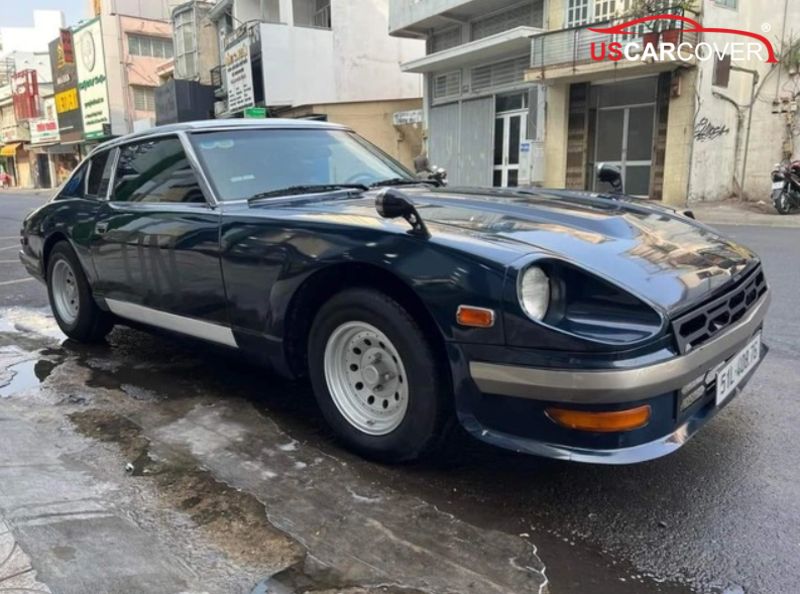
Seven common mistakes that speed up paint and interior aging
Many problems come from habit:
Covering when the car is still hot or wet: traps heat and moisture, inviting ghosting and stale odor.
Using an overly sealed, non-breathable cover: sweat and dew do not vent, so interiors pick up a sun-baked, humid smell.
A baggy, one-size fit: breeze balloons the fabric and scrubs sharp edges.
Rough, dark-dyed liners: more friction, more risk of dye transfer.
Dry-wiping hot panels: instant swirl marks.
Overtightening one strap: concentrates load and rips a grommet.
Economic benefits: small investment, long-term payoff
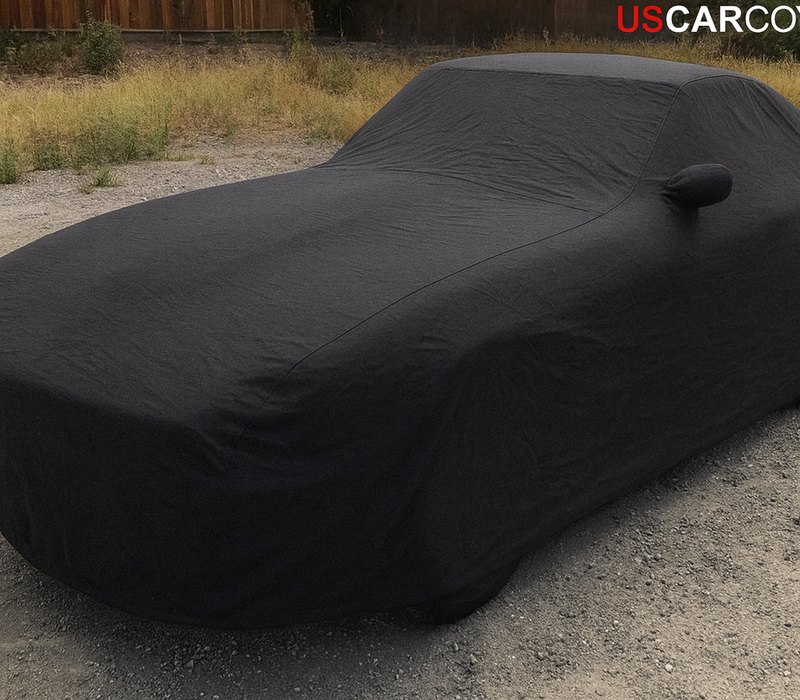
Repainting a hood, restoring leather, or replacing cracked trim can be multiple times the price of a good cover. Using a UV-protective, breathable cover meaningfully delays those costly jobs. You also save energy because a cooler cabin means the air conditioner does not have to work as hard at startup. More importantly, uniform paint and a fresher interior lift valuation when you sell. From a financial angle, a Datsun car cover is a quick-payback investment because it reduces maintenance spend across the ownership span.
If you want to keep your Datsun in character through many sunny seasons, you cannot leave it to the weather. A Datsun car cover is the first and most consistent layer of defense against sun and UV. Prioritize UV protection, breathability, quick drying, a soft liner, and a vehicle-specific fit. Pair that with the correct routine: wash and dry, align the cover properly, distribute strap tension evenly, inspect on schedule, and dry the cover fully before storage. Small daily discipline becomes a big difference after one or two sunny seasons: paint stays deep, the interior stays fresh, opening the door at peak sun no longer stings, and your Datsun holds its value.
From America’s hot-sun context to the UV damage mechanism, the most effective answer is still stopping the cause at the outside skin with a proper Datsun cover. Start today and let the cover do the work. Each time you lift it, your Datsun keeps its original spirit and is ready for the next drive.
